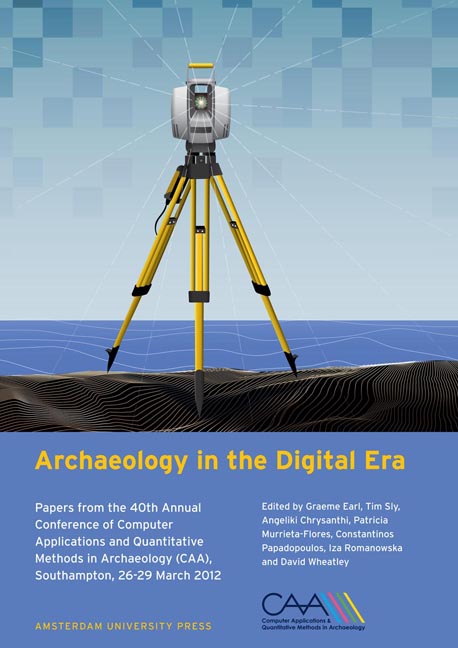 Archaeology in the Digital Era
Archaeology in the Digital Era Paperless Recording at the Sangro Valley Project
Published online by Cambridge University Press: 16 February 2021
Summary
Abstract:
This paper presents the results of the Sangro Valley Project's deployment of a paperless recording system in a mixed environment of excavation and survey. It also discusses some advances made in archaeological photography. Finally, it presents preliminary results from on-going experiments with automatically generating Harris Matrices from a FileMaker Pro database and with using iPads and iPhones as GPS units for survey.
Keywords:
Recording, iPad, Paperless, Photography, Database
Introduction
The Sangro Valley Project (hereafter abbreviated SVP) was founded in 1994 and is now managed by Oberlin College in collaboration with the Soprintendenza per i Beni Archeologici dell’Abruzzo and the University of Oxford. The project operates a summer field school in Italy for Oberlin and other students; it employs a multi-disciplinary team of specialists from Canada, Italy, the United Kingdom, and the United States. The project's goal is to characterize and investigate the nature, pattern and dynamics of human habitation and land use in the longue durée within the context of a Mediterranean river valley system—the Sangro River valley of the Abruzzo region of Italy, the territory of the ancient Samnites (http://www.sangro.org).
Over its first sixteen years the SVP employed various formats to record, store, manage, and analyse its data, with recording methods based on the Museum of London Archaeological Service's site manual (Museum of London 1994). The opening of a new site in 2011 provided an opportunily to rethink the project's data systems. The Pompeii Archaeological Research Project: Porta Stabia, directed by Professor Steven Ellis of the University of Cincinnati, pioneered the use of Apple's iPad in 2010 for paperless recording of basic excavation data as well as for drawing and other functions (Wallrodt and Ellis 2011; Porta Stabia 2011). Building upon their success, the SVP developed an integrated paperless recording system in FileMaker on both laptop computers and iPads. The paperless system pushes digitization of data into the field—this replaces traditional recording using paper forms, followed by subsequent transcription into computer systems, with direct data entry into the digital database (an unlocked public version of this database has been made available at www.paperlessarchaeology.com to assist others in developing similar systems).
- Type
- Chapter
- Information
- Archaeology in the Digital EraPapers from the 40th Annual Conference of Computer Applications and Quantitative Methods in Archaeology (CAA), Southampton, 26-29 March 2012, pp. 25 - 30Publisher: Amsterdam University PressPrint publication year: 2014


